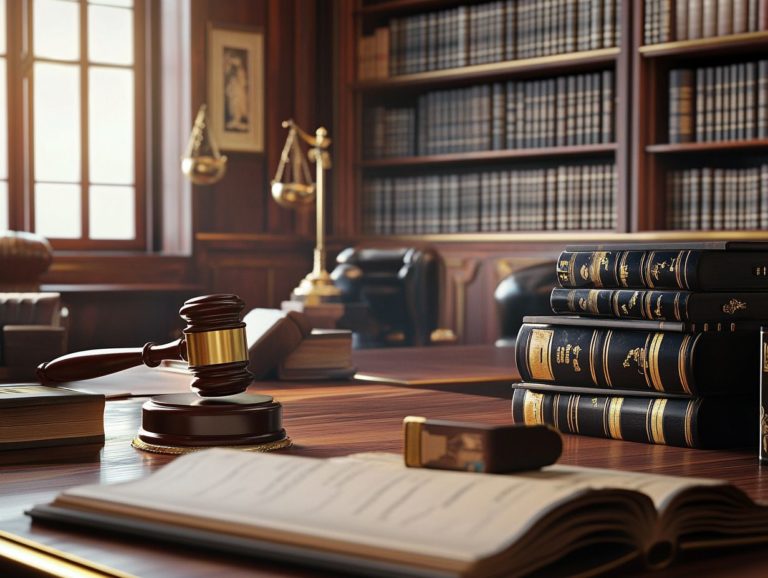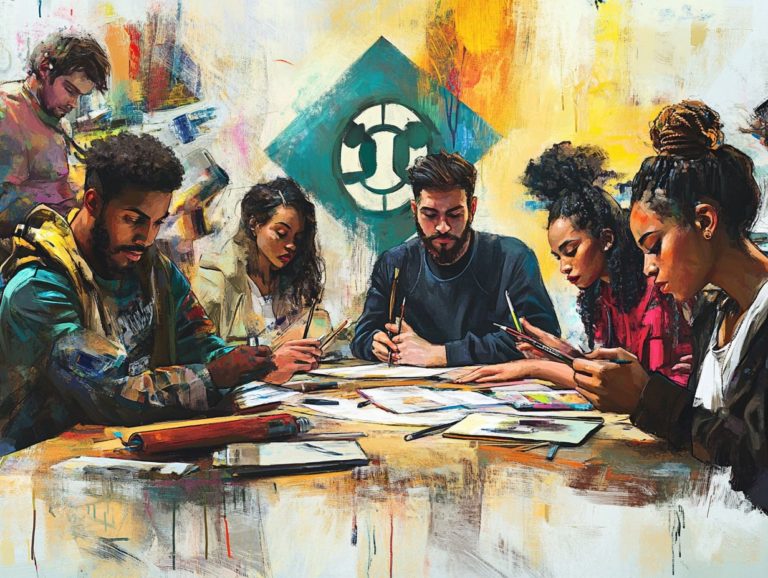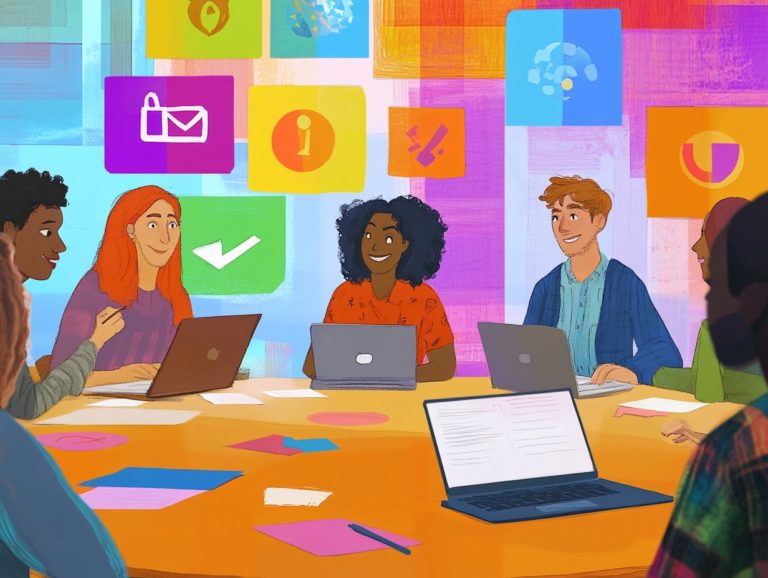The Process of Licensing Copyrighted Works
Copyright licensing plays a vital role in safeguarding your creative endeavors, empowering you whether you’re an artist, writer, musician, or filmmaker to maintain control over how your work is utilized.
This article delves into the various types of copyrighted works, ranging from literary pieces to audiovisual projects. It clarifies who holds the rights to these creations and walks you through the licensing process. You ll learn about the benefits and limitations while exploring alternative methods for utilizing copyrighted material.
Whether you find yourself on the creator side or as a user, grasping the nuances of copyright licensing is essential in today s dynamic creative landscape.
Contents
- Key Takeaways:
- Types of Copyrighted Works
- Understanding Copyright Ownership
- The Licensing Process
- Benefits and Limitations of Licensing
- Alternatives to Licensing
- Frequently Asked Questions
- What is the process of licensing copyrighted works?
- Who can grant a license for copyrighted works?
- What are the different types of licenses for copyrighted works?
- Do I need a license to use someone else’s copyrighted work?
- How do I obtain a license for copyrighted works?
- What happens if I use copyrighted work without a license?
Key Takeaways:

Understand what copyright licensing is and its importance in protecting creative works.
Know the different types of copyrighted works and who holds the rights to them.
Familiarize yourself with the process of obtaining a license and the benefits and limitations of licensing a copyrighted work.
What is Copyright Licensing?
Copyright licensing is a vital process in the world of intellectual property. It enables you, as a copyright owner, to authorize the use of your original works by others through a legally binding copyright license agreement.
This system is designed to protect your rights while providing a framework for the economic benefits tied to your creative efforts. By carefully discussing terms, you can establish agreements that protect both your interests and those of the person or group using your work.
Copyright licensing is very important because it allows for the sharing and utilization of artistic and intellectual creations, ultimately fostering innovation and creativity.
You have various types of copyright licenses at your disposal, including:
- Exclusive licenses, which grant the licensee specific rights and often limit your ability to use the work yourself.
- Nonexclusive licenses, which permit multiple parties to use the same work simultaneously.
Each license type distinctly affects the rights and responsibilities of both you and the licensee. While you retain some control over your work and can generate potential revenue, licensees gain access to valuable creations while committing to the agreed-upon conditions that respect your intellectual property.
Types of Copyrighted Works
Copyrighted works encompass a rich tapestry of creative outputs, spanning literary, artistic, musical, and audiovisual pieces. Each of these works is governed by distinct rights held by copyright holders, designed to protect the creator s intellectual property and preserve the integrity of their creations.
Literary, Artistic, Musical, and Audiovisual Works
Literary, artistic, musical, and audiovisual works each embody distinct forms of expression that enjoy protection under copyright laws. This protection allows you as a creator to maintain control over your intellectual property.
These categories encompass a wide array of works, ranging from novels and poems to paintings, sculptures, songs, and films. Copyright protection gives you exclusive rights to reproduce, distribute, and publicly display your creations, nurturing an environment where creativity can flourish.
For instance, your literary works are safeguarded under copyright, though the specifics can vary depending on the medium you choose. Artistic works come with their own considerations regarding licensing.
The concept of fair use adds another layer, permitting limited use of copyrighted materials without explicit permission under certain conditions. This opens up nuanced discussions about copyright infringement and the delicate balance between protecting creators like you and fostering innovation.
Understanding Copyright Ownership
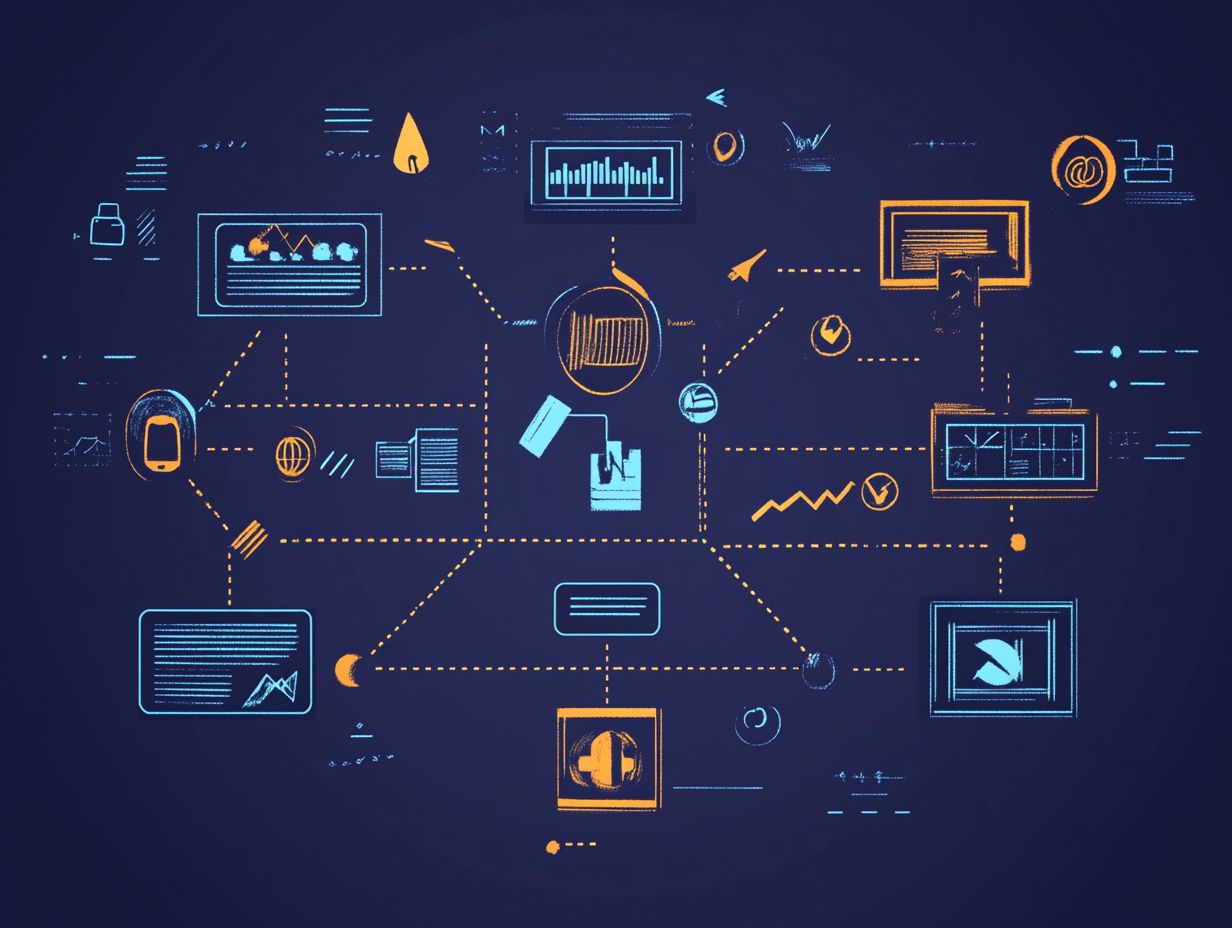
Understanding copyright ownership is crucial for every creator. It s your key to owning your work! It delineates who possesses the rights to your work and outlines how those rights can be managed or assigned in accordance with established copyright laws.
This knowledge enables you to navigate the complexities of intellectual property with confidence and clarity.
Who Holds the Rights?
The rights to a copyrighted work are typically held by the copyright owner, who could be the creator or a separate entity assigned these rights. This significantly influences how intellectual property rights are managed.
This creates a complex landscape where individual creators, corporations, and various organizations play distinct roles in ownership. Each stakeholder has unique motivations and stakes. These can range from maximizing profit to preserving artistic integrity.
Transferring ownership dramatically affects control over a work and its leverage in the marketplace. That s why it s essential to have clear documentation in licensing agreements. Ambiguous terms can easily lead to disputes and misunderstandings.
Proper documentation ensures that all parties are aligned, mitigating risks associated with copyright infringement and effectively safeguarding everyone’s interests.
The Licensing Process
The licensing process consists of several essential steps that you, as a copyright owner, must follow to grant authorization to a licensee for using your copyrighted material. For a detailed overview, refer to the understanding the copyright registration process.
This journey culminates in a formal licensing agreement that clearly outlines the terms and conditions governing that use.
Steps for Obtaining a License
Obtaining a license typically involves a series of steps that begin with your permission request and culminate in the establishment of a copyright license agreement detailing the licensing terms.
To initiate this process, you need to carefully draft a permission request that outlines the purpose and scope of the requested license. This request should clearly articulate your intended use and provide relevant context, ensuring all parties involved grasp its significance.
After submission, be prepared to negotiate terms that reflect both your interests and those of the other party. Address aspects such as duration, geographical limits, and financial arrangements. Clear communication during these negotiations is vital; it fosters trust and minimizes misunderstandings.
Once you and the other party reach an agreement on the terms, it’s crucial to draft a concise and legally sound licensing agreement. This document should be reviewed by legal professionals to ensure clarity and enforceability, thereby safeguarding the interests of both you and the licensor.
Benefits and Limitations of Licensing
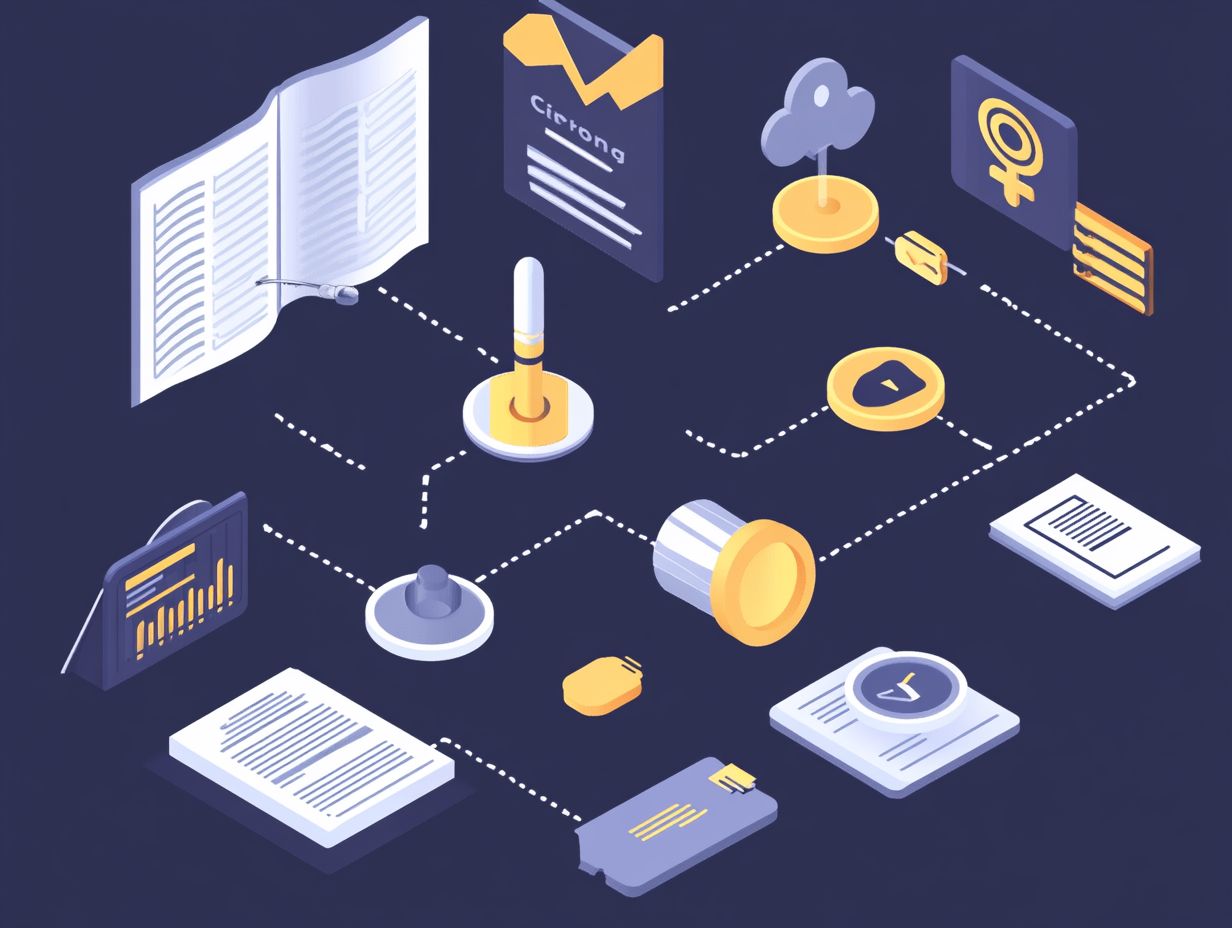
Licensing provides a wealth of benefits for both copyright owners and licensees, unlocking economic rights and the potential for significant revenue generation.
However, it has limitations worth considering in any licensing agreement.
Pros and Cons of Licensing a Copyrighted Work
When you consider licensing a copyrighted work, it s crucial to weigh the pros and cons. Think about the potential for increased visibility and revenue against the risks of copyright infringement and the impact on moral rights.
On one side, granting licenses can open up exciting opportunities to reach broader audiences, much like those chart-topping songs that find their way into films or commercials, often resulting in significant financial gain. For example, when a beloved track makes its debut in an advertisement, the original artist can see a remarkable boost in album sales.
However, this comes with a trade-off; it can also strip artists of control over how their work is presented, potentially diluting their brand identity or altering the context in which their creation is viewed.
Moreover, licensing agreements can introduce a labyrinth of complexities, such as disputes over ownership or the permissible uses of the work, which might ultimately stifle the creative freedom of copyright holders.
Alternatives to Licensing
If you re seeking alternatives to the traditional licensing process, there are several options available to you.
Consider exploring fair use provisions and the creation of derivative works. These avenues can offer you opportunities for copyright protection without the necessity of a formal licensing agreement.
Other Ways to Use Copyrighted Material
You have several ways to use copyrighted material beyond formal licensing agreements. One option is invoking fair use, but you must navigate carefully to avoid copyright infringement.
Many creators may overlook that certain uses like commentary or educational purposes can indeed fall under fair use. This offers a valuable pathway to incorporate essential resources without facing legal troubles.
It s crucial for you to understand the details of copyright laws to distinguish what qualifies as fair use versus infringement.
When uncertainty arises, reaching out to the original creator for permission is a smart move. This ensures that you re using the material ethically and legally.
Did you know that using someone s work without permission can lead to serious consequences? Unauthorized use can result in hefty fines and legal action. That s why it s imperative to approach this area with caution and respect.
Frequently Asked Questions
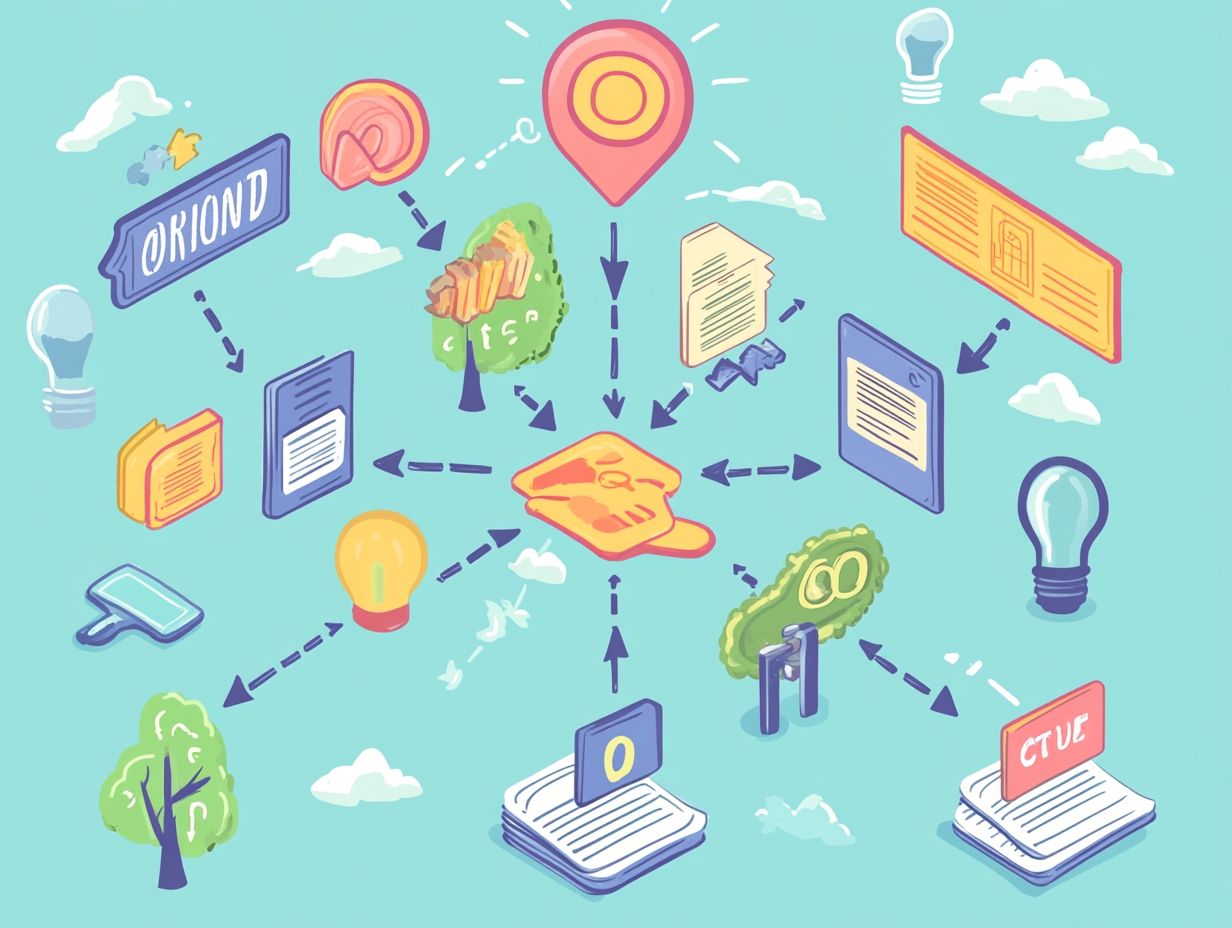
What is the process of licensing copyrighted works?
The process of licensing copyrighted works involves obtaining permission from the owner to use it in a specific way. To understand this further, you can explore the process for IP licensing, which can include reproducing, distributing, or displaying the work.
Who can grant a license for copyrighted works?
The owner of the copyrighted work, whether an individual or a company, is the only one who can grant a license for its use. They have exclusive rights to their work and can choose who can use it.
What are the different types of licenses for copyrighted works?
There are two main types of licenses for copyrighted works: exclusive and non-exclusive. An exclusive license grants the licensee sole rights to use the work, while a non-exclusive license allows the owner to grant multiple licenses to different parties.
Do I need a license to use someone else’s copyrighted work?
Yes, you need a license to legally use someone else’s copyrighted work. Even if you are using it for educational or non-commercial purposes, it’s still important to obtain permission from the owner.
How do I obtain a license for copyrighted works?
The process of obtaining a license for copyrighted works varies depending on the owner. It typically involves contacting the owner, negotiating terms, and signing a license agreement.
It’s important to clearly outline the scope and limitations of the license in the agreement.
What happens if I use copyrighted work without a license?
Using copyrighted work without a license is considered copyright infringement and can result in legal consequences. It is essential to obtain permission and properly license the work to avoid potential legal issues.

